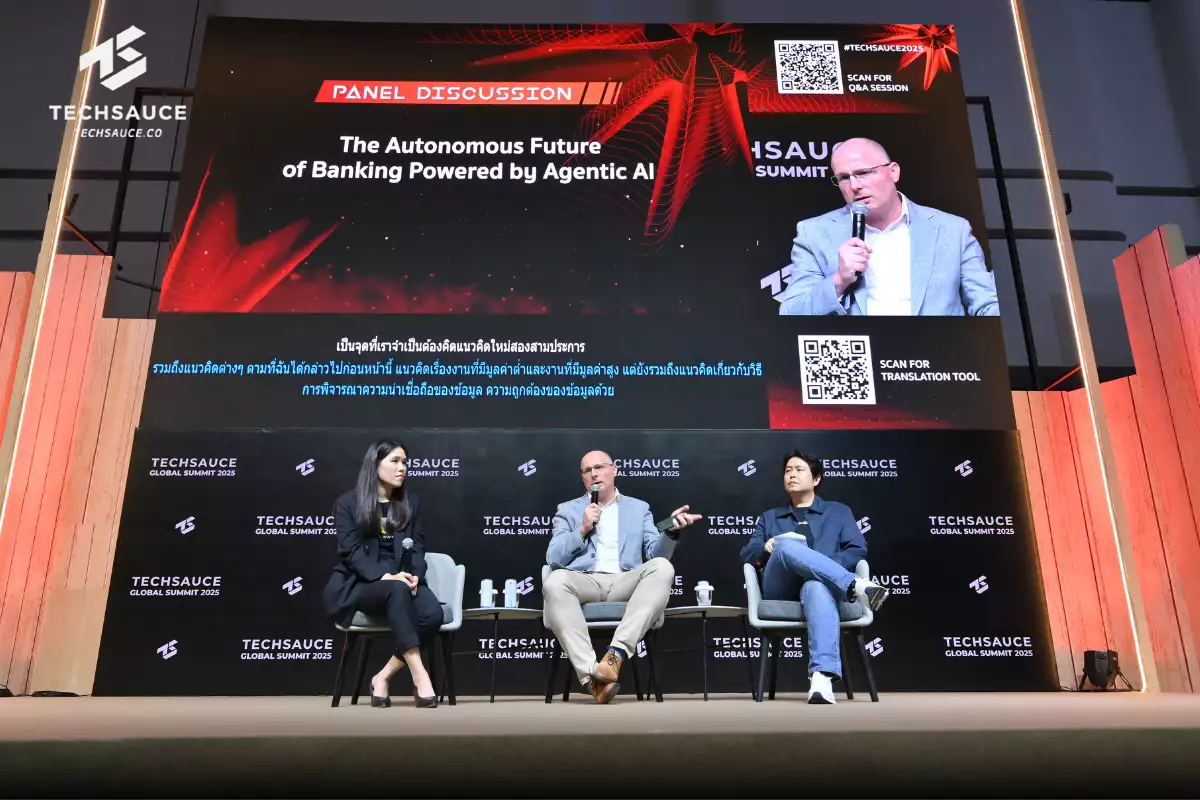Maximise the potential of AI and Machine Learning by Mr Ryan Gavin, General Manager of AWS
Most companies recognise the buzzwords, Artificial Intelligence (AI) and Machine Learning (ML). However, understanding the value of these technology is more crucial in applying them to businesses. Techsauce had the chance to learn about these hot topics from Ryan Gavin, General Manager for AI and Ml in AWS.
How can we convince the big corporates to use AI and ML?
When speaking to his customers, Mr. Gavin usually start by asking them “if you think about your week, and you’re a CEO, how many predictions do you make in a week” Every business leader makes a lot of predictions almost every day, which brings him to his point that
Machine learning at its heart, is about making better predictions.
A retailer has to consider the amount of inventory to manage or staff strength on a weekend, in order to maximize efficiency. For those building supply chains, they need to decide the best time for suppliers to arrive with their orders. ML is collecting data about things that happened in the past, building and learning models based on those data, to predict and make better decisions. These predictions and decisions are very important, as most businesses has very fundamental reliance on them.
While the term AI may get lost in the hype cycle, in reality, it is very practical in almost every aspect of business. Some of AWS’ customers includes the Expedia group, which can use ML to determine the image that attracts people to book rooms, and feature it on some 300 000 sites. Many customers also use ML for contact centres like help centres, as it turns out, 60 to 70% of callers asks the same questions. They can use AI with an integrated chatbot with natural language to answer customers’ questions faster. However, it has to be smart enough to know when it needs to hand that customer off to an actual human agent. The added benefit is that the AI is able to transcribe the conversations using natural language and understanding, so that the human agent knows what was said, and can pick up where they left off.
There is almost not an industry or vertical where ML cannot be applied to make better business decision or improve the customer experience. For example, NewsCorp in Australia uses ML to predict which articles should be behind or in front the paid firewall, and determine the best ones to draw customers in their paid service. This is an existing problem they have been trying to solve, and ML can help solve it faster, more accurately, and at a lower cost.
What is the next challenge that you foresee?
The first problem is data. Sometimes, there is too much data which cannot be simply handed over without having it labelled. When building a computer vision model, such as an imagery of a street, a human label should be able to step in and give obstacle alerts for millions of frames. Humans will have to label that data and feed the ML models, to be able to make predictions on things it sees in future.
For example, looking at some of the core business problems customers have, Amazon Personalise and Amazon Forecast provide customers with ML models that are custom built for them, so that they do not have to learn ML. They simply bring their data, Amazon personalise and learn from that data, create custom models, which they can then access via an API.
Do you have an AI and ML expert for each product in the Amazon Web service?
We have discreet teams that work on our application, AI and ML services like SageMaker, as well as our infrastructure and Framework services. Besides that, we have teams that work across the rest. These teams have been using AI and for things like deep learning, ML, products, solutions, fulfillment centres, and Amazon.com.
What is the big trend in ML next year?
Reinforcement learning is a technique that many developers are excited about learning, but is hard to learn. This technique of ML has been around for 30 years, but has been largely inaccessible. It is to solve for a particular outcome, like winning a game, maximizing the efficiency of a turbine, or finding the most efficient route of shipping a container. A good way for developers to learn that could be through an autonomous car, such as the Deep RZR turbo car, which makes it an exciting and approachable way to learn a new field.
Can we use deep research to teach the students?
Yes, it is a great teaching tool, because it is fun and engaging. Managed services makes it easier to build and train employees with models, and teachers are also looking forward to use those as assignments for their students. For example, AWS has been using a course on Amazon to train our developers to become ML developers, called Machine Learning University.
What advice will you give to universities starting to develop ML courses?
Today, there are not enough developers and data scientists that are ML practitioners. In helping any average developer become an ML developer, it has to be made far easier. Launched last year, the Amazon SageMaker takes a lot of heavy lifting. The tools and techniques required to build ML are put in packages, which allows developers to learn, set and build ML models, and deploy them very simply.
Furthermore, training and courseware needs to be more broadly available. When AWS announced its ML University courses, they went viral, because there is a hunger for that insufficient content.
Lastly, many of the new developers need to build the use and put the machine learning to work without having to learn ML. AWS created AI services which are as simple as API done in a few clicks, such as Amazon Recognition and Amazon Comprehend.
It has become highly important to invest in all 3 areas, so that more developers across the globe can start to take advantage of ML and put it to work for their businesses.
What are the dos and don’ts for traditional companies who want to adopt ML?
Think about the things you do every day where it can be made easier through ML.
Whether is it understanding the voice of customers, translating documents or trying to do customer recognition, AI services can put ML to work with no ML skills required. Reason being, it can do the things that are currently done, just that it can do it faster, more accurately and at a lower cost.
Get your developers to become ML developers.
Allow them to start learning how to build and train using deploy custom models based on the business’ data. Provide them with tools like Deep RZR, as fun ways to start learning new skills and capabilities, especially for developers who love to tinker.
Contact ML experts.
Combined with ML solutions lab, these experts speak to customers to find out what they are trying to achieve, their business goals and outcomes. All that information is then brainstormed together to decide how ML can help.
ลงทะเบียนเข้าสู่ระบบ เพื่ออ่านบทความฟรีไม่จำกัด







